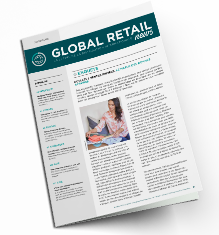A cultural revolution for retailers in China
In China, the digital shift is forcing high-end brands and retailers to innovate at breakneck speed. They have to change their state of minds, taking a step back from former arrogant postures to adopt more inclusive partnerships.

The figures speak for themselves. In 2020, e-commerce accounted for 45% of retail in China, making the country one of the most digitalised retail markets in the world. With consumers suddenly stuck at home, this acceleration has been particularly strong for premium brands. According to Bain & Co, luxury goods sales jumped by 48% in China in 2020, reaching nearly €44 billion. China was the only country where the luxury market increased, whilst other parts of the world saw a drastic collapse: luxury retail sales fell by 26% in Americas, by 25% in Japan and by 36% in Europe. It is not surprising that China is cited as the number one priority for many high-end retailers interviewed by mind Retail. This is notable for Moncler, Chanel, Burberry, Longchamp, Hermès and Jacadi. Today, China is again a priority market for many retailers, ahead of the U.S.A. “Many of those who slowed down in Asia want to accelerate there again,” explained Sylvain Jauze, Director of WW Sales & International Operations at the Cegid software company specialized in retail. When some premium brands want to move to a large country, China always comes first”. This is the case, for example, of the high-end-outdoor clothing brand Fusalp, which operates 45 stores worldwide for a turnover of €30 million in the financial year to the end of May 2020, including 15% of online sales. “We realised that we can’t attack Asia and the U.S.A. at the same time, so for the moment we are focusing on Asia,” said the C.E.O. Alexandre Fauvet. “China is a key market for Fusalp as we have to be ready for the 2022 Beijing Olympics. But it’s also a real battle. It’s expensive in terms of marketing and we have to earn a reputation for ourselves”.





